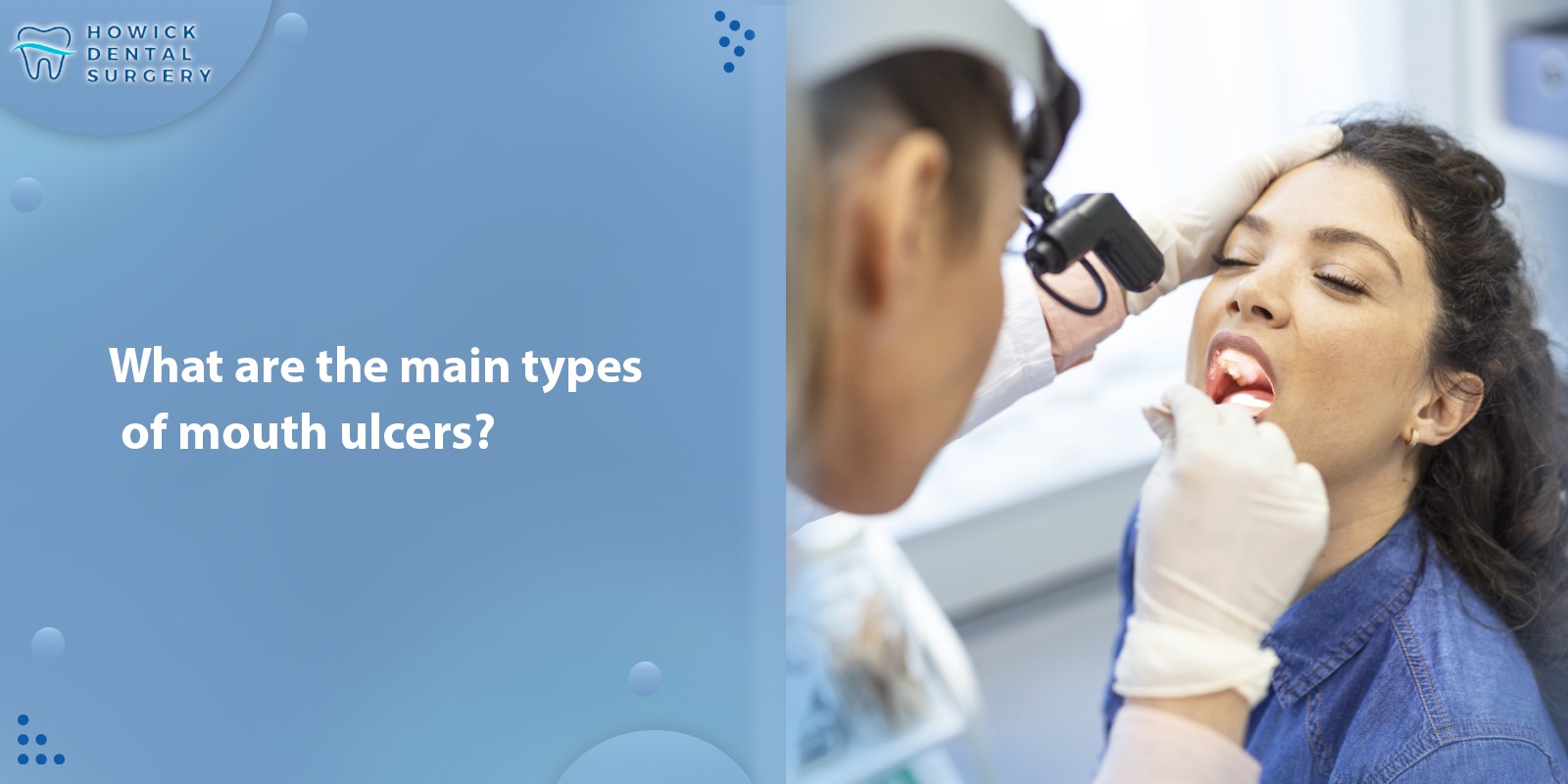There are several kinds of ulcers or lesions in the mouth. Some of the more common ones in NZ include:
- Aphthous ulcers (Canker sores): These are the most frequent type. They’re usually small, round or oval, white or yellow in the centre, with a red rim. They may recur periodically.
- Traumatic ulcers: Caused by physical injury — biting your cheek or tongue, brushing too hard, rubbing from sharp teeth or dental appliances (e.g. braces, ill-fitting dentures). These are most often single, localised, and tend to heal once the source of irritation is removed.
- Infection-related ulcers: Some ulcers are caused by viruses (for example herpes simplex), fungi (candida), or secondary infections in the mouth. These may be more painful, possibly accompanied by systemic symptoms.
- Ulcers due to systemic causes: These can recur and be more severe. Underlying health conditions like Crohn’s disease, coeliac disease, anaemia or nutrient deficiencies (iron, folic acid, vitamin B12) often contribute. Hormonal changes, immune system status also factor in.
- Less common / serious lesions: Some ulcers or mouth lesions might signal oral lichen planus, leukoplakia, erythroplakia or even early mouth cancer. These generally don’t heal within the usual timeframe and require dental or medical assessment.
Causes & Risk Factors
Many triggers and contributing factors are common in NZ, just like elsewhere:
- Trauma: accidentally biting the cheek/tongue, sharp edges of teeth, ill-fitting dental appliances or dentures, rough brushing.
- Dietary & Nutritional factors: Deficiencies in vitamins (B12, folate) or minerals (iron); sometimes food intolerances/allergies. Certain acidic/spicy foods can aggravate ulcers.
- Stress, fatigue and hormonal changes: Stress levels, lack of sleep, fluctuating hormones (e.g. during menstrual cycles or pregnancy) can increase risk.
- Medication and medical conditions: Some medications (NSAIDs, etc.), immune disorders, gastrointestinal disease are linked.
- Oral hygiene and irritants: Harsh toothpastes (e.g. with Sodium Lauryl Sulfate), certain mouthwashes, or poor cleaning that leaves bacteria accumulation can contribute. Also hot or sharp food, heat burns.
Treatment & Relief
While most mouth ulcers heal on their own in about 1-2 weeks in healthy people, there are many ways to ease discomfort, speed healing a bit, and reduce the chance of recurrence.
Self-Care / Home Remedies:
- Rinse with warm salt water (e.g. ½ teaspoon salt in a glass of warm water).
- Avoid very spicy, acidic, rough or hot foods while the ulcer is healing.
- Use a soft-bristled toothbrush, avoid brushing too harshly over the ulcer.
- Maintain good oral hygiene to reduce infection risk. Clean dentures or appliances properly.
- Drink plenty of water, manage stress, ensure enough rest.
Pharmacy / Dental-Level Treatments:
- Protective pastes or barrier gels that cover the ulcer and shield it from further irritation.
- Antiseptic mouthwashes (e.g. chlorhexidine) to reduce bacteria around the ulcer.
- Topical steroid pastes or ointments in more severe or recurrent cases. Dentists may prescribe these.
- Local anaesthetic gels or sprays to ease pain when eating or brushing.
When to See Your Dentist or Doctor
It’s wise to seek professional advice if:
- An ulcer persists for more than 2–3 weeks without signs of improvement.
- Ulcers are unusually large, very painful, or frequently recurring.
- You have accompanying symptoms like fever, swollen glands, weight loss, signs of infection.
The ulcer looks unusual — for example, has a white or red patch that doesn’t heal, occurs in people who smoke, drink heavily or are over middle-age (higher risk for mouth cancer).


Leave a Reply